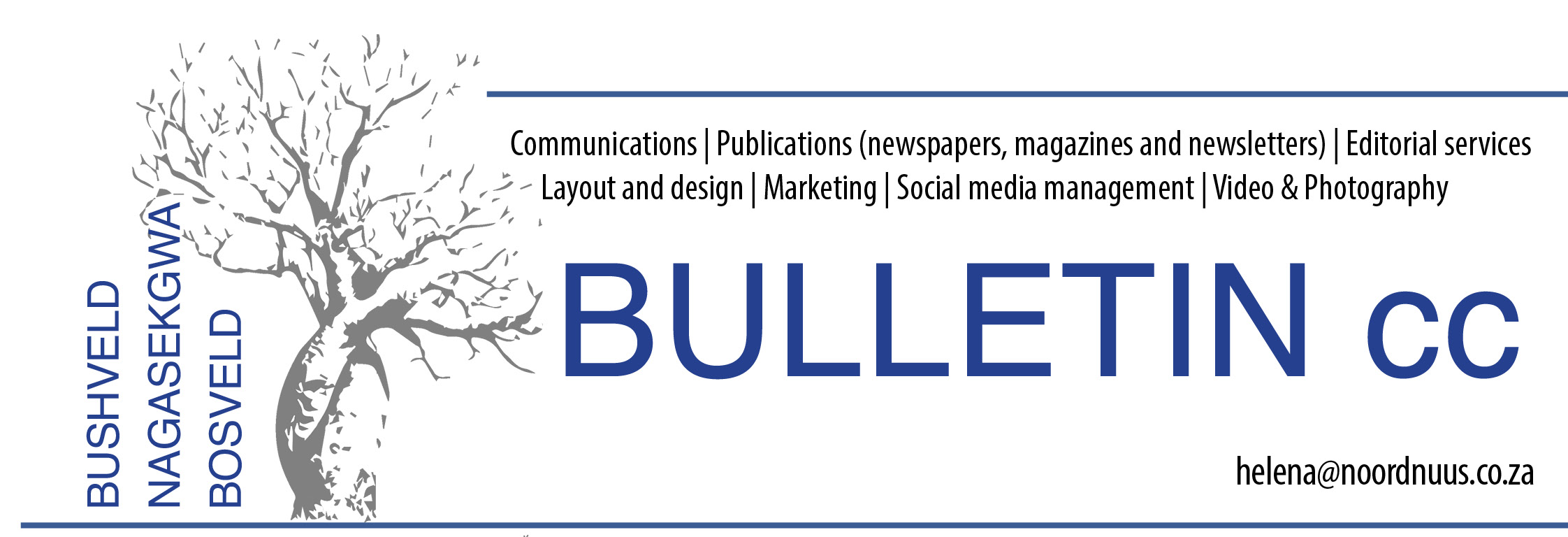Lephalale and Steenbokpan: A tale of two cities?
Sasol group media manager, Alex Anderson told Northern News recently that Sasol took the
decision not to proceed with Project Mafutha based on the findings of the pre-feasibility studies, global environmental risks and the absence of a commercially viable emission solution (carbon capture and storage), which is not anticipated before 2020.
Sasol Mining held a prospecting right in respect of nine farms in the Steenbokpan area from August 2007 till September 2012. On behalf of the Waterberg JV (Sasol and Exxaro), the company submitted a mining right application in respect of these reserves to the Department of Mineral Resources on 14 August 2012. A decision is pending.
General manager of the Grootegeluk Medupi Expansion Project, Joe Meyer disagrees with Gleason that Sasol has missed out on their opportunity to utilise Waterberg coal. “Sasol’s interest in the Waterberg will most probably be guided by oil prices. There are predictions that crude oil will in the near future as, crude oil reserves get depleted, cost as much as $200 a barrel, this will undoubtedly make the Waterberg an attractive option for Sasol to develop a coal-to-liquid plant.”
He told Northern News this week that should the mining right be granted, Sasol and Exxaro could mine high grade coal to be used for a coal- to-liquid plant and low grade coal destined for other coal-fired power stations. He predicts that a Sasol coal-to-liquid plant in the Steenbokpan area is still a possibility, but that such a project could take 15-20 years, from feasibility to first production.
“Although Waterberg coal is not of as high in quality as the Mpumalanga reserves, it will be mined and could be the answer to South Africa’s looming energy crisis. Clean energy can only contribute around 15% to SA’s energy grid; the other 85% will have to come from either coal or nuclear sources. Nuclear is expensive to build, especially after the Japan disaster.
“In my opinion a more affordable option would be to build a second and even third coal-fired power station next to Medupi. It must be remembered that we do not only must cater for the growth in SA, but also for the replacement of the old power stations. This is a mammoth task. The experience with Medupi and Kusile will serve us well with lessons learned and to pave the way forward to do it more effectively. On the longer term we will have to move to nuclear as our prime source of energy. It is important to balance the harmony between mega-industry and our very precious eco-system in the Bushveld,” Meyer added.
Another coal-fired power station will undoubtedly see unprecedented growth in Lephalale, but according to local town planner, Dries de Ridder, Steenbokpan is the place to watch. “With projects such as Exxaro’s Thaba Metsi mine, the Vedanta independent power plant, Boikarabelo mine, Sekoko mine, Sasol as well as Anglo coal’s proposed mine - all in a 20km radius from Steenbokpan - this small Bushveld town might in the next two to five years grow to be even bigger than Lephalale.”
According to de Ridder the Steenbokpan develop-ment group, a consortium of 9 developers, will submit town-establishing applications for 200 vacant stands in Steenbokpan. He notes that there are several other similar applications already filed by other developers.
Meyer on the other hand cautions that investing in Steenbokpan might be a risk. “In my opinion it makes more sense to drive development where infrastructure already exists - Lephalale. You must have economy of scale to carry the costs and it is very important to be on the main road linkages”
Margie Geyser, principal for Remax in Lephalale, says that there has been a lot of interest from investors in Steenbokpan over the past few months. “In the past we struggled to sell farms in the area but recently three farms were bought and requests for town establishment were lodged. It is, however, always difficult to predict growth as it depends highly on the economy,” Geyser added.
Whether Lephalale and Steenbokban will grow into the economic hubs, remains to be seen. The availability of water, the economy and the granting of the necessary mining licences will determine how fast and where growth will take place. The completion of phase two of the Mokolo-Crocodile Water Augmentation Project, and the planned expansion of the Transnet rail network in the Wateberg will contribute to the development of the Waterberg coalfield which ultimately holds 40% of South Africa’s coal reserves.













0 Comments